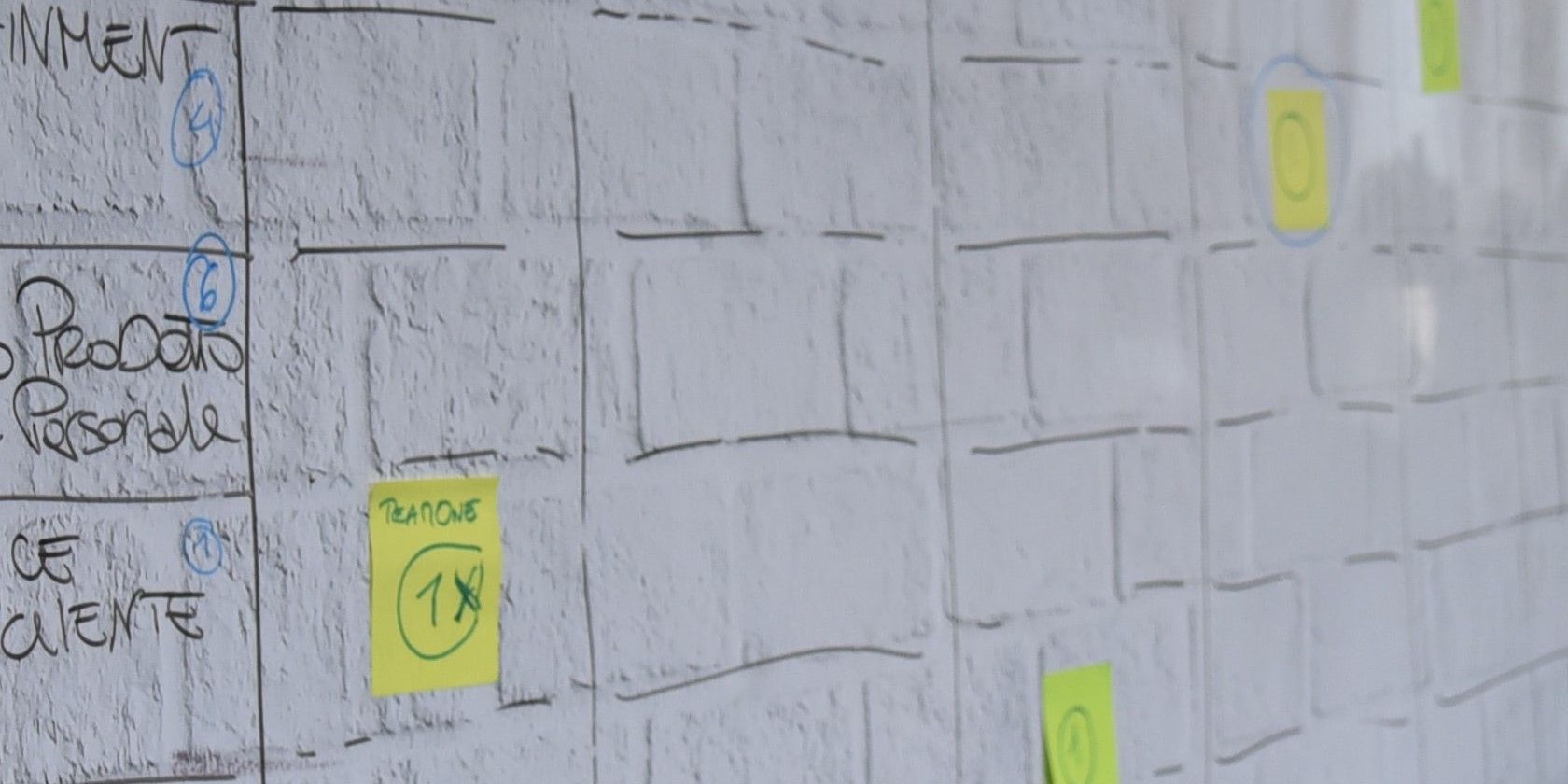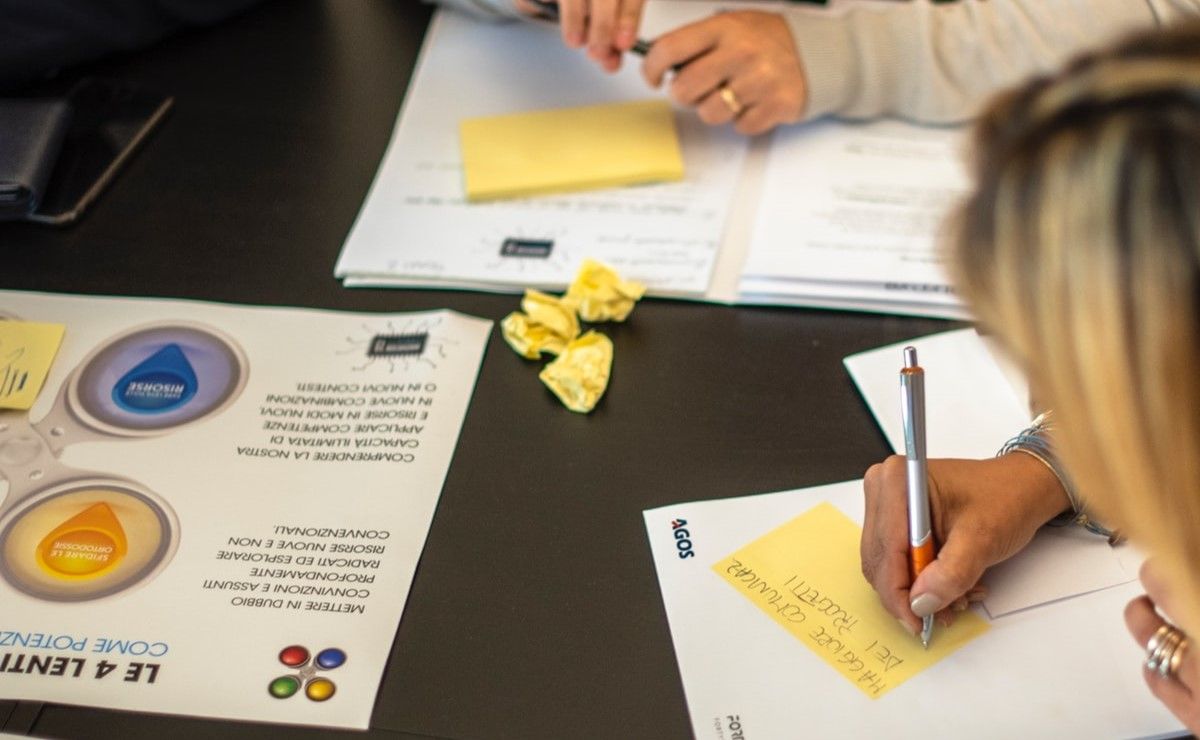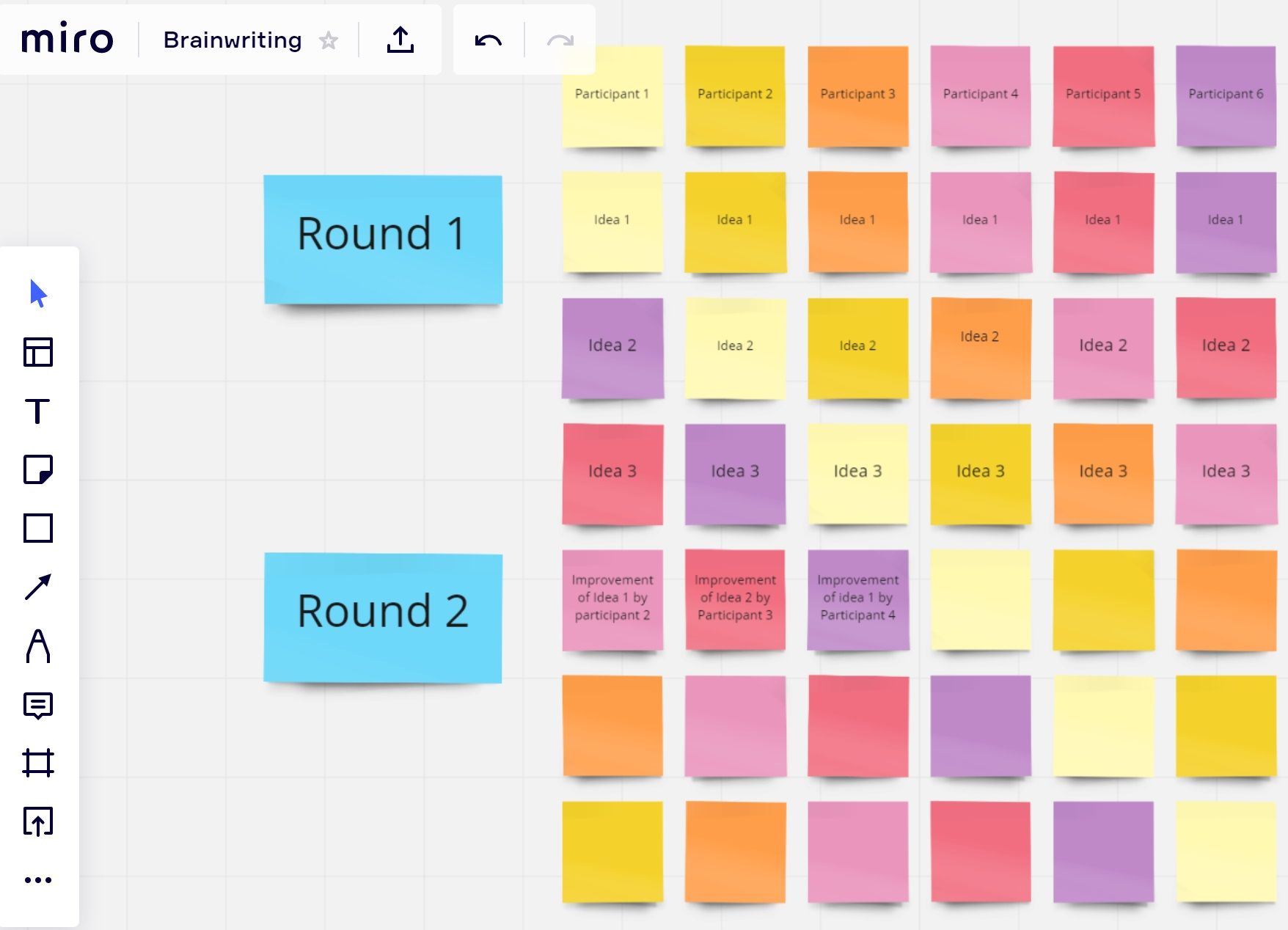The problem with traditional ideation—the generation of new ideas—is that it often requires time. It's also inevitable to have disagreements, lengthy discussions, and inconclusive meetings. But what if there was a way to streamline the process and make it more efficient? Well, there is. It's called 6-3-5 Brainwriting.
Brainwriting is a technique to generate ideas in a quick and organized fashion. The 6-3-5 Brainwriting method can help teams generate up to 108 new ideas in about 30 minutes. Let's look at how you can use this technique during your next problem-solving session.
What's the Difference Between Brainstorming and Brainwriting
Brainstorming is the act of group idea generation. Usually, teams brainstorm verbally. Sessions are often lengthy and can take an hour or more. Brainwriting, on the other hand, is condensed brainstorming without the verbal component. Instead, participants write ideas down within a specified time limit, focusing on speed.
Brainwriting requires practice, and the intent is only to come up with ideas, not provide complete solutions.
How to Conduct the 6-3-5 Brainwriting Session
- The guideline for a 6-3-5 session is six people, three ideas, and five-minute rounds. 6-3-5 sessions also need a moderator, a timer, and a way to write ideas.
- Participants sit in a circle, and each person writes three suggestions on a single sheet per five-minute round. Sessions last six rounds. The moderator keeps time and ensures discussion is minimal.
- When each round ends, the sheets of paper are passed to the person on the left.
- Without any discussion, this person writes three more ideas. These can be new or build on something from the previous rounds (called “hitchhiking”). Hitchhiking further develops the clarity of an idea. At the end of the brainwriting session, participants vote on the best suggestions and can share them within the organization.
Once teams are comfortable with the 6-3-5 Brainwriting method, it can be adapted for smaller and larger groups.
Ways to Conduct a Brainwriting Session
You can choose to conduct your 6-3-5 Brainwriting session in person or online.
- Pen and paper method: If your team meets in person, use pen and paper or sticky notes to write ideas. The moderator takes notes of the session and shares them with others.
- Virtual method: If you prefer to meet online, you can use collaboration tools like Miro or Google Jamboard to conduct the 6-3-5 Brainwriting session. Miro has a template specifically for brainwriting, and the moderator can add notes or comments. Miro's whiteboard can also be saved online and shared with others.
Effectiveness of the 6-3-5 Brainwriting Method
This method works well when the focus is on the number of ideas and not on their quality. You can also adapt brainwriting to suit your specific needs with longer sessions or more people.
And while brainwriting works well, it does have weak points. For example, it needs a moderator, so the method might not be the right fit if you're short-staffed. Additionally, if you need a more comprehensive solution to your problem, traditional brainstorming may be more effective. But if you've never tried 6-3-5 Brainwriting, it's an excellent tool to add to your idea-generation toolbox.



